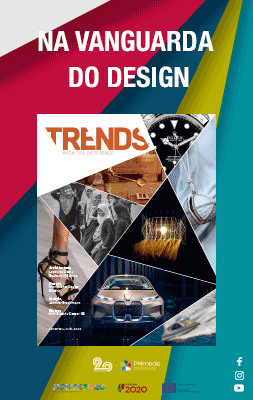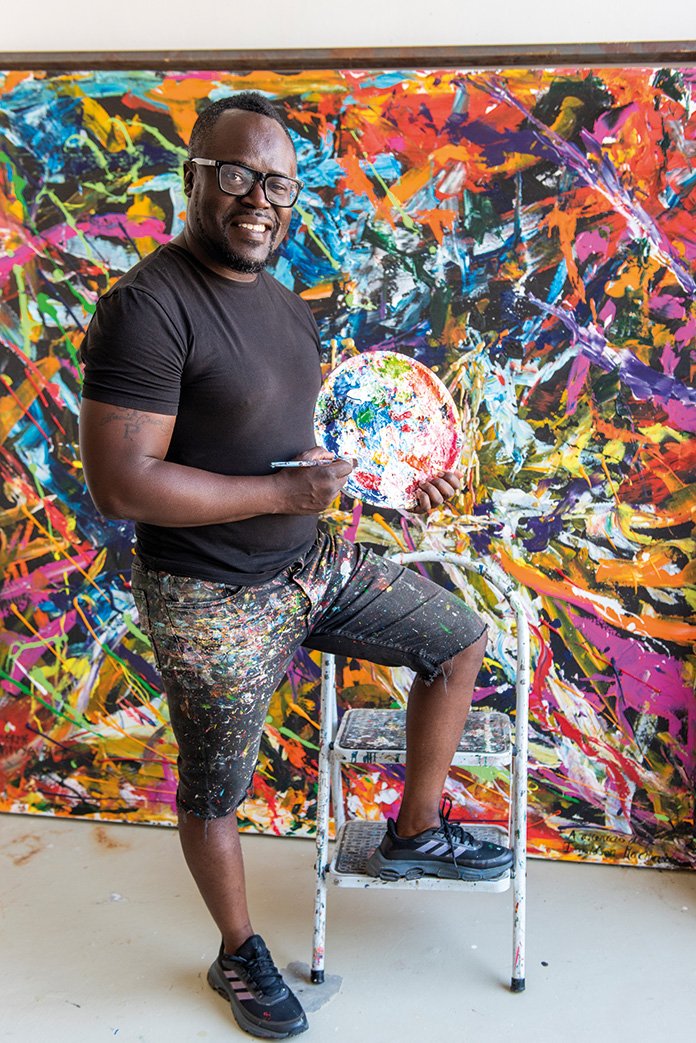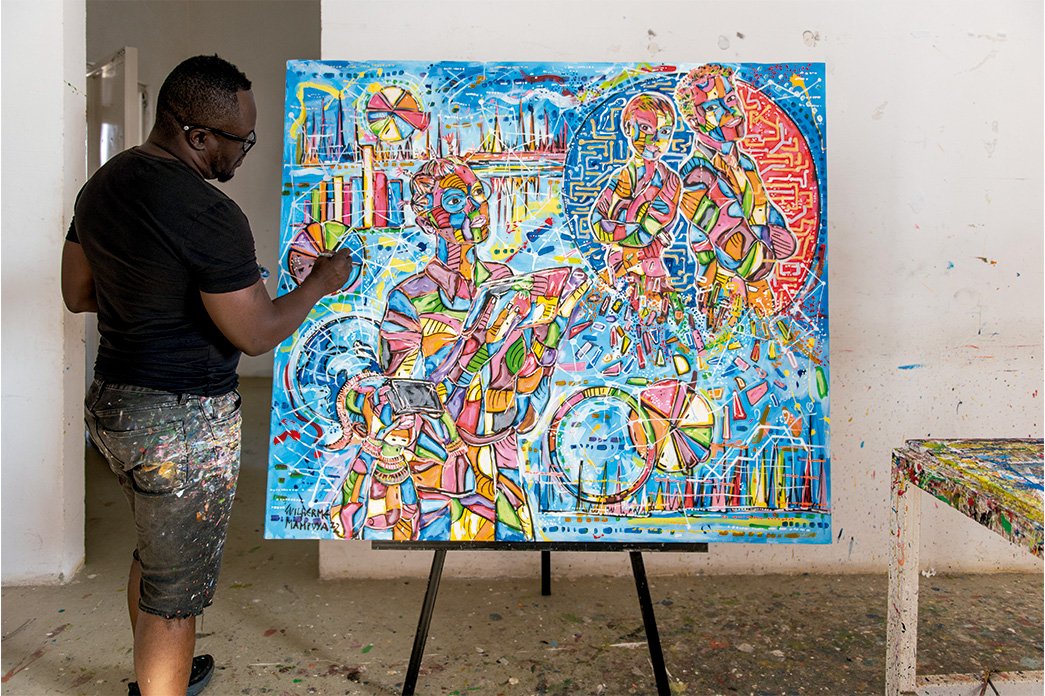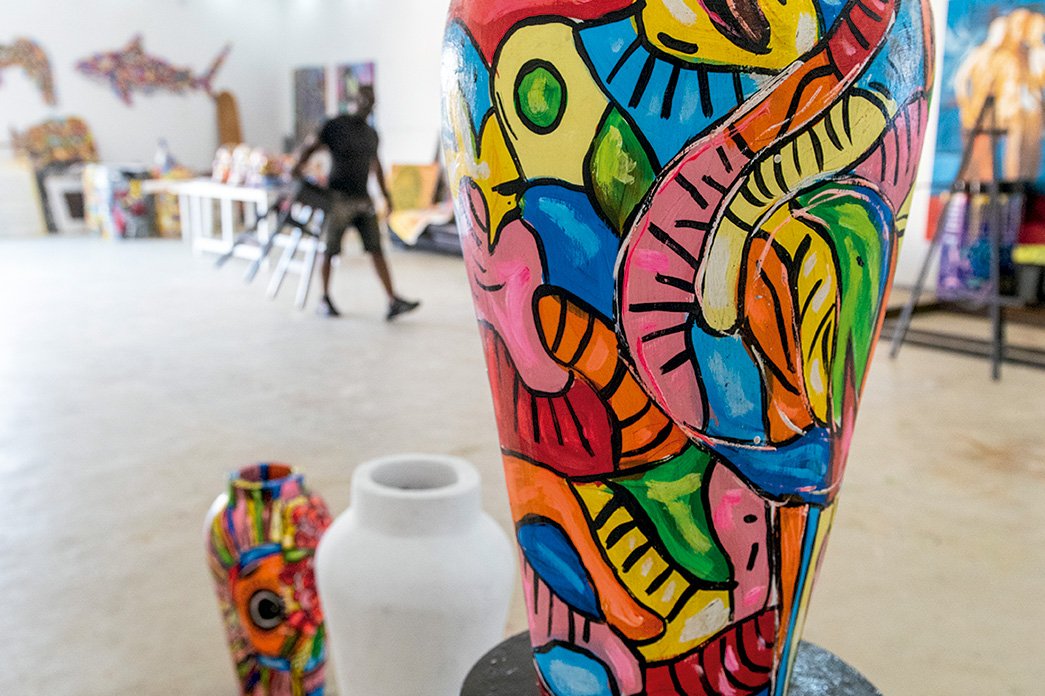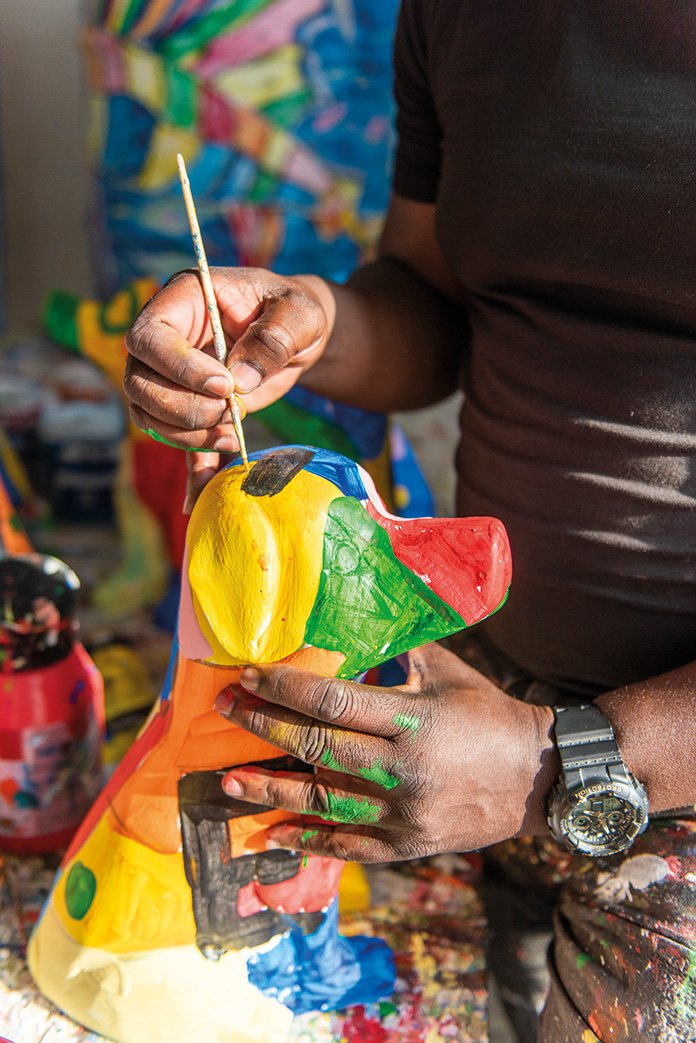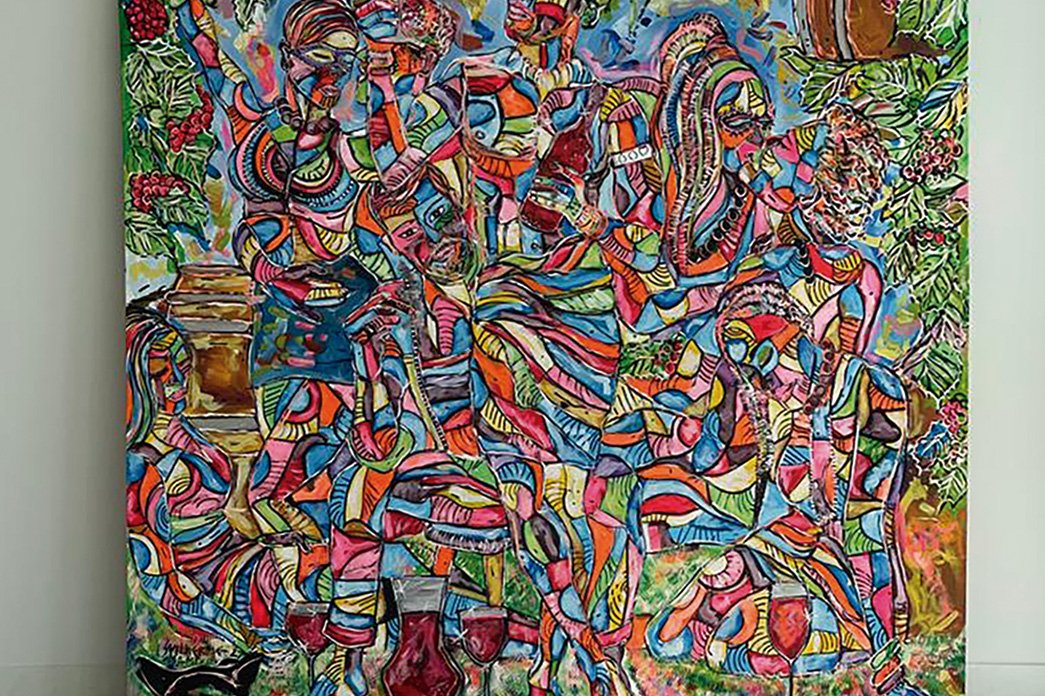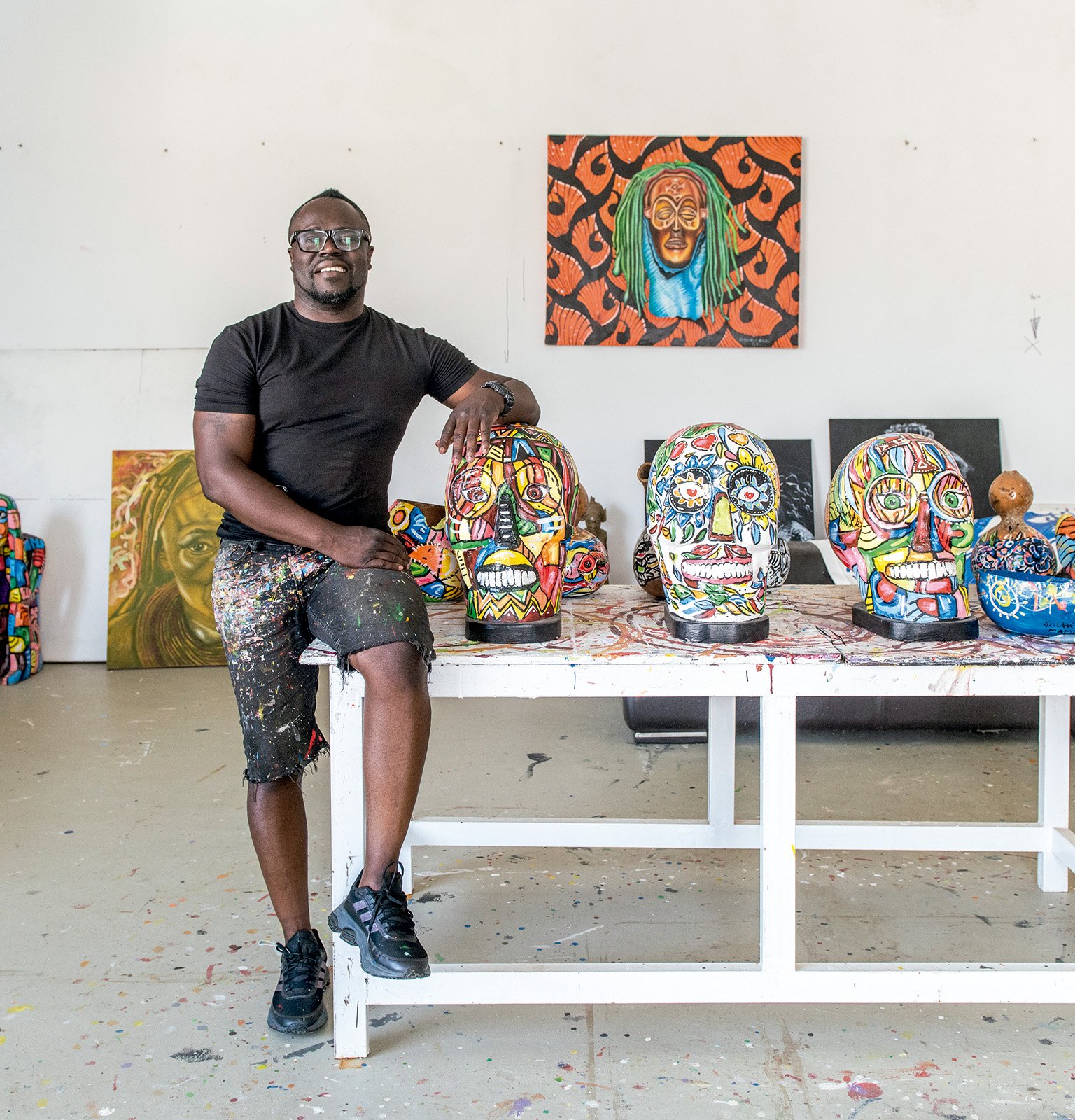
In a relaxed conversation, we got to know the artistic world of Guilherme Mampuya. He draws, sculpts and paints on canvas. And you can even see his work portrayedin porcelain pieces. The artist has works spread all over the world. He graduated in Law from the University of Kinshasa, in the Democratic Republic of Congo. But it was in painting that he found fulfilment. He was born in theUíge province andspent his childhood between Alvalade, Bairro Popular and later in Viana. He spoke to V&G about his memories of that time, his artistic career, culture in Angola and the exhibitions he has held abroad. He represented Angola atExpo Dubai; and this year he will be at Art Basel Miami Beach. With the pandemic came the desire to create a kind of museum, in his studio, so that people can see old collections, his universe, but also that of so many other national artists.
Where does Guilherme Mampuya’s story begin, in terms of painting?
It’s a long story. It begins in my childhood. In drawing class, I was basically the best in the class. Obviously there was a ‘competitor’, but throughout my school years I always stood out. In Biology we had to draw pictures so that the teacher could explain the subject and I was the one who drew. In the meantime, I went to university. I studied law. And during the ‘calmer’ periods in class, I always ended up painting. My friends even told me that I should go and do Fine Arts.
But you never went to study fine arts?
No. So much so that in 2000 I finished my degree in Law and, at that time, I worked as a public defence lawyerin court in the Democratic Republic of Congo, where I stayed for a year. I returned to Luanda in 2001. I started visiting some art studios and in 2002 I went to one of them to learn the basics of painting. In 2003, I began working in a company as a legal adviser. And I forgot about painting. But it wasn’t my thing to wear a suit and tie, I was more into being relaxed. So, in 2006 I dedicated myself to painting. My first exhibition at the Umbi Umbi gallery was a fiasco. I didn’t sell athing.Nobody knew who Guilherme was. I took the works out of the gallery and put them up in the Alvalade hotel. There were people from the elite there, who understood art, and the truth is that in the very first week I made 3,600 USD. From then on, my art started to be appreciated. At the time, Emídio Pinheiro, chairman of the board at BFA bank, became a patron. My career has continued some 16 years since then.
«Those moments of sadness, of conflict and of personal accomplishment, all that is a source of inspiration»
Where does Guilherme Mampuya’s story begin, in terms of painting?
It’s a long story. It begins in my childhood. In drawing class, I was basically the best in the class. Obviously there was a ‘competitor’, but throughout my school years I always stood out. In Biology we had to draw pictures so that the teacher could explain the subject and I was the one who drew. In the meantime, I went to university. I studied law. And during the ‘calmer’ periods in class, I always ended up painting. My friends even told me that I should go and do Fine Arts.
But you never went to study fine arts?
No. So much so that in 2000 I finished my degree in Law and, at that time, I worked as a public defence lawyerin court in the Democratic Republic of Congo, where I stayed for a year. I returned to Luanda in 2001. I started visiting some art studios and in 2002 I went to one of them to learn the basics of painting. In 2003, I began working in a company as a legal adviser. And I forgot about painting. But it wasn’t my thing to wear a suit and tie, I was more into being relaxed. So, in 2006 I dedicated myself to painting. My first exhibition at the Umbi Umbi gallery was a fiasco. I didn’t sell athing.Nobody knew who Guilherme was. I took the works out of the gallery and put them up in the Alvalade hotel. There were people from the elite there, who understood art, and the truth is that in the very first week I made 3,600 USD. From then on, my art started to be appreciated. At the time, Emídio Pinheiro, chairman of the board at BFA bank, became a patron. My career has continued some 16 years since then.
«Those moments of sadness, of conflict and of personal accomplishment, all that is a source of inspiration»




